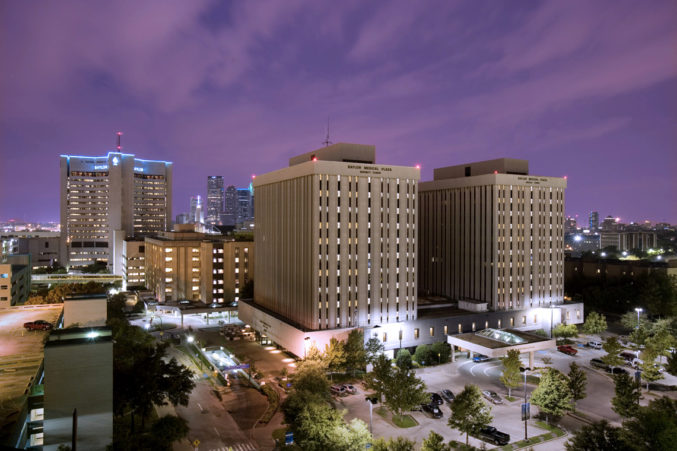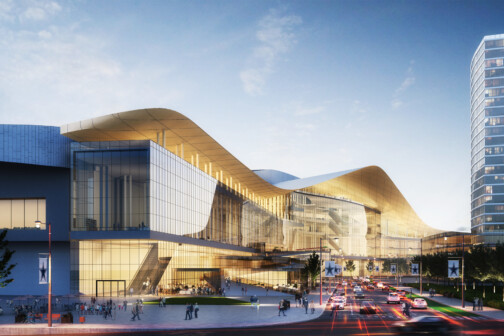
There was an interesting article in Monday’s Dallas Morning News that seemed to unintentionally make a case against the suburbs even though it was optimistic with regards to reporting on the suburbs’ success. The story is about the little town of Prosper, just north of Frisco on the Dallas North Tollway.
Prosper is the latest exurb to experience an incredible development boom thanks to our prevailing macroeconomic strategy for growth in North Texas, which entails extending and widening roads as a means of attracting increased investment to undeveloped areas of our land-rich, sprawling region-city. In the last decade, thousands of people have moved to Prosper for its relatively affordable luxury-style homes, proximity to workforce centers in the northern sector, and quality public schools. In fact, to attract homeowners, real estate investors helped build those schools, places like Light Farm Elementary, for which Republic Property Group of Dallas provided both land and $2 million to build.
However, Prosper is a victim of its own rapid prosperity. Its schools are starting to crowd, and city leaders are wondering how they will meet growing demand for desks in classrooms. Current enrollment at Prosper High School has now exceeded its classroom capacity, and most of the elementary and middle schools in the district look like they will meet capacity soon.
“For years, we were waiting on the expansion of roads — I turned red from holding my breath,” said Dr. Mike Goddard, public information officer for the Prosper Independent School District. “Then Preston Road was widened and now 380, and it reminds me of Allen when I was growing up there.
“We’re seeing unprecedented growth. And every day, when I get the daily attendance report, I think, ‘Where did all these kids come from?’” he said. “We had around 3,500 students when I started here six years ago. Today it’s 8,269.
On the one hand, this is a good problem. A booming community should boast a booming economy. Increased property tax revenue could be directed towards expanding the district and adding more schools. However, the economic situation in Prosper isn’t so simple. While the housing growth in the area has been exponential, commercial growth hasn’t followed as quickly as promised. Prosper’s mayor points to a handful of big new developments coming online, like a Texas Health Resources facility and a new office building behind the hospital, which will help expand the tax base. But what Prosper still lacks are some basic services – grocery stores, retail – largely because the town is not far enough from Frisco, which has an abundance of all of those things.
The DMN article intends to offer a snapshot of Prosper on the cusp of Frisco-esque success. The rooftops are on the ground, it reports, and so commercial growth will follow. Increased property and sales tax will bolster the district’s revenues, and the situation will eventually balance out. In fact, one of the reasons for optimism is that Prosper, despite being so far from downtown Dallas (or, rather, because of it), is a lot closer to the center North Texas’ booming economic growth.
That may happen. But reading about Prosper, I couldn’t help but wonder if what we are in fact seeing is the canary in the coal mine – the town that is just far enough and coming online just late enough that it won’t follow in the footsteps of the Plano-Allen-Frisco miracle. In fact, reading about Prosper, which sits almost exactly halfway between downtown Dallas and the Red River, about 42 miles from each, makes our whole style of growth sound a bit like a massive pyramid scheme. The article makes clear that entire system is contingent on road expansion that hooks cheap and available raw land up to the economic engine. But can that kind of growth go on forever?
Maybe the answer is actually in the article, offered by a major Collin County landowner who is bullish about new developments – some driven by Jerry Jones and Deion Sanders.
[Rex] Glendenning, the Celina land broker and third-generation rancher in northern Collin County, sees almost limitless possibilities.
“The market seems to be stable and growth and population trends are going in the right direction,” he said. “I think where we are today in North Texas, especially in North Dallas, we’re going to see the same kind of growth California experienced in the ’60s, ’70s and into the ’80s.
Glendening is right, the growth and trends are headed in the right direction if you are a major landowner in Collin County. But limitless isn’t quite the word, especially if you are making a comparison between North Texas and California. After all, what did California’s ‘70s and ‘80s boom do but set the stage for the state’s economic difficulties of the ‘00s and ‘10s?
Here’s where you’ll hear protests that Texas is not California, particularly in terms of the coastal state’s large unfunded pension liability, which is the economic albatross around California’s neck. Another pressure on California’s economy is its water shortages. But North Texas’ economic miracle has its own Achilles heel. In spite of our recent rains, an extended drought could easily force similar sorts of challenges related to water shortages on these newer communities, as we have seen in the recent past. And rather than a pension liability, the inability to afford infrastructure will catch up to the region – indeed it already has. The inner-ring suburbs are already grappling with a variety of problems, Plano is nearly built-out, and highway funds are drying up. All of these things will continue to exert their own forms of political pressure.
We’ve been accused on this blog of being too Dallas-centric or anti-suburbs. But I’m not anti-burbs. I completely understand why people choose to live in a place like Prosper: convenient life; good schools; ample space; personal autonomy; and social, intellectual, and economic comfort and security. When it comes to writing about urbanism and transportation, what I’m always trying to think about is sustainability. And when I read about Prosper, I see a vision for growth that is disposable by nature.
The story of Prosper is a good thing for Glendening and Jerry Jones, but I can’t understand how it is a good thing for the long-term sustainability of the region at large. Even if Prosper can get looped into the mega-system – if the commercial real estate follows in suit with new tax revenues to help prop-up its crowding schools – the sprawl can’t go on forever. I can’t see how we can afford to reach Denison before the scheme collapses.
We have to decide where to draw the line for the endless growth to stop; the market won’t do it for us. We need to create policies that accommodate new growth by promoting affordable density – both in Dallas and in the suburbs – in lieu of cheap and easy growth on virgin dirt. That won’t happen, however, until will have a massive mentality shift on the part of the regional transportation authority. Because as the piece about Prosper makes abundantly clear, if those new roads weren’t built, Prosper would still be a quiet and perfectly happy little ranch town.




